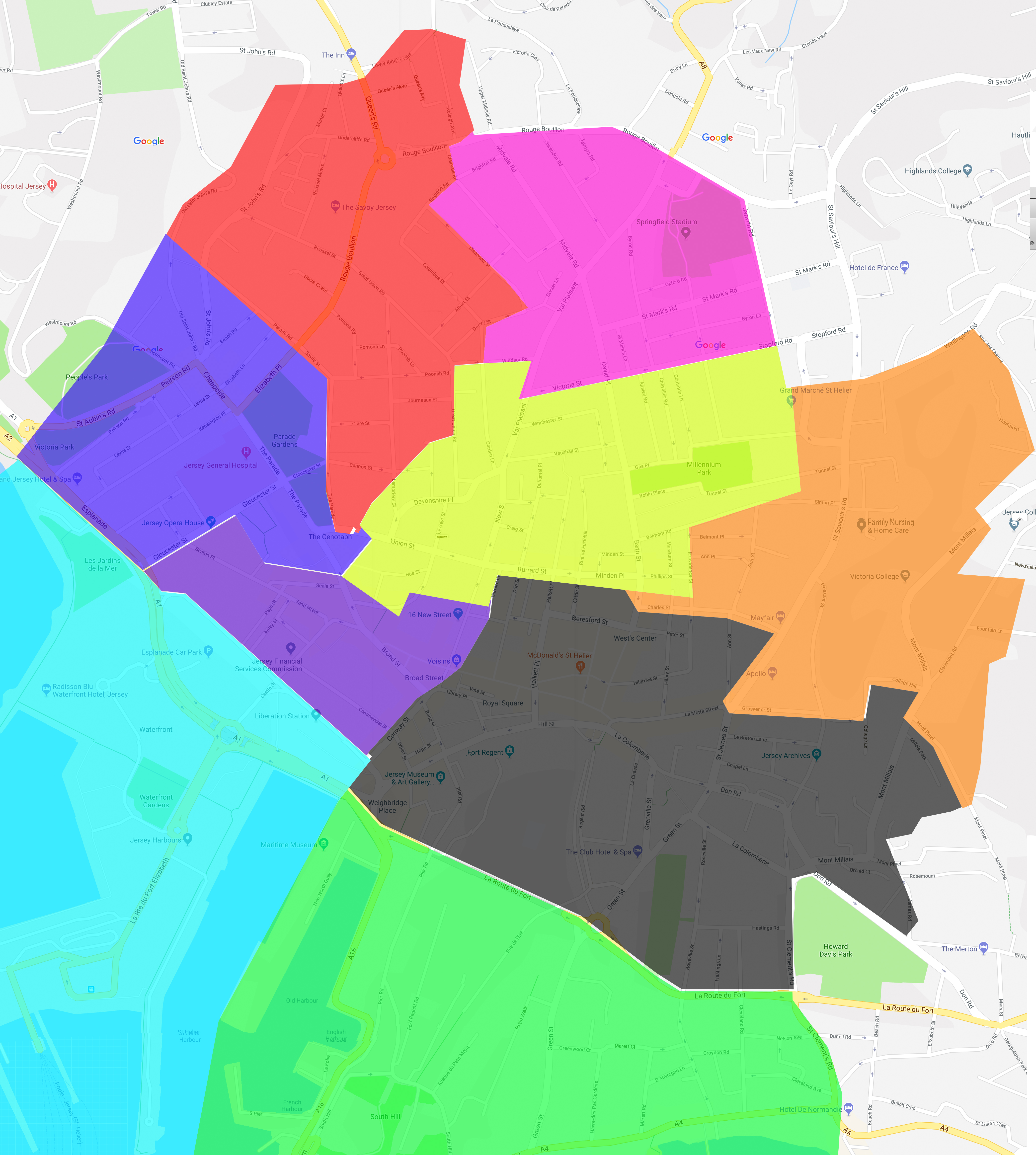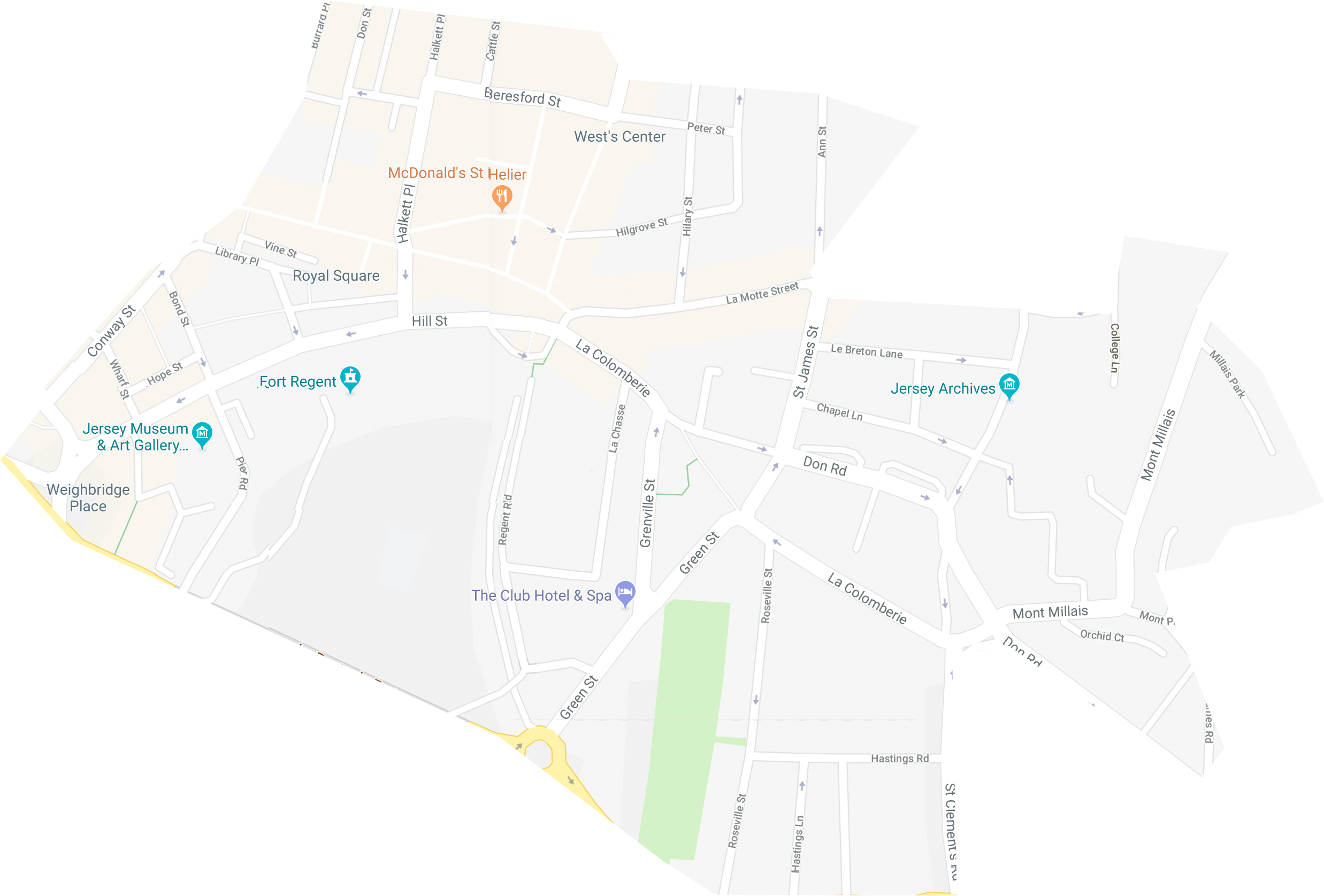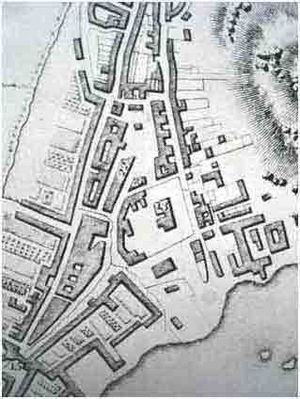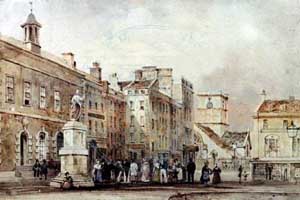History Of My Area
Working closely in collaboration with Societe Jersaise, I will produce a detailed shoot in my assigned area of St. Helier.

 The area I was assigned to was Grey. It included areas such as Weighbridge Place, Royal Square and Fort Regent.
The area I was assigned to was Grey. It included areas such as Weighbridge Place, Royal Square and Fort Regent.
An early map of St Helier before the land on which the Weighbridge stood had been reclaimed The Weighbridge is one of the most important locations in St Helier. The name has been taken by the whole area to the north of the Old Harbour and New North Quay, where the original public weighbridge formerly stood
Weighbridge Place is all reclaimed land, the shoreline of St Helier was previously over 200 metres to the north on the south wall of the town churchyard. Gradually, from the 18th century onwards, the sea was pushed back, as first warehouses, and then hotels and other properties, were built to the south of the church.
Then construction of St Helier Harbour began in the 19th century, and gradually more and more land was reclaimed – a process which is continuing to this day. The weighbridge itself was ordered to be constructed in 1825, and, as the island’s potato industry developed, for several weeks of every year it was the centre of island life, as farmers brought their crop to St Helier for weighing, packing and then shipping out of the island

The Royal Square has been the center of Jersey life for centuries. Indeed, there are no records of anywhere else having the same level of importance.
The Royal Square in the early-19th Century, with the Courthouse on the left, the statue of George II, the Corn Market on the right, and the Town Church in the background. The buildings in the centre adjoining the Courthouse had yet to be demolished to make way for the library building. The early 20th century photograph below shows the frontage of the library tower.

Fort Regent was built as the island’s main barracks and fortification from 1806 to 1814, just as the Napoleonic Wars were coming to an end. A decision to develop Fort Regent as a leisure complex was taken in December 1967. In 1970 the cable car facility was opened which gave access to Fort Regent from snow hill, this was closed to public use in 1991. In 1974 the Fort was roofed over.
The swimming pool was built on the Glacis Field and opened in 1971, the Gloucester Hall opened in 1978; this is part of Fort Regent’s multi-use facilities. The Queens Hall opened in 1988
